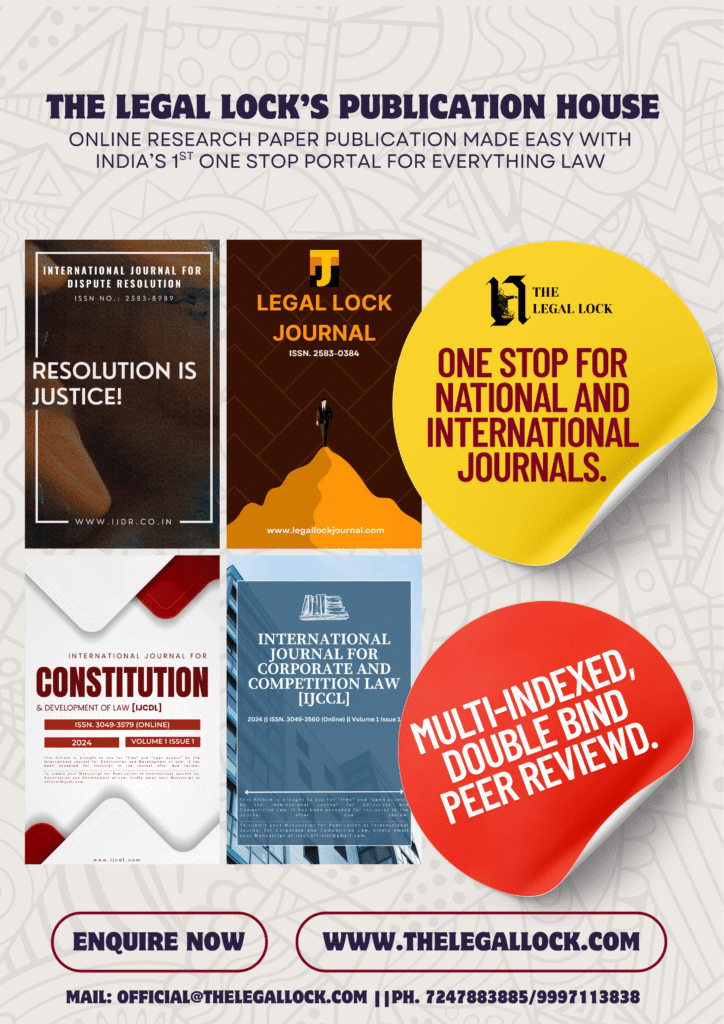CASE BRIEF: SREI Equipment Finance Ltd. v. Rajeev Anand & Anr.

| CASE NAME | SREI Equipment Finance Ltd. v. Rajeev Anand & Anr. |
| CITATION | 2019 SCC OnLine NCLAT 1264 |
| COURT | National Company Law Appellate Tribunal |
| Bench | A.I.S. Cheema, Kanthi Narahari, V.P. Singh |
| Date of Decision | 5 December, 2019 |
Introduction
The case of SREI Equipment Finance Limited v. Rajeev Anand & Ors stands as a pivotal decision in India’s evolving insolvency jurisprudence. Decided by the National Company Law Appellate Tribunal (NCLAT), this case delves into critical aspects of financial debt recognition, procedural compliance, and the evidentiary burden in corporate insolvency proceedings under the Insolvency and Bankruptcy Code, 2016 (IBC).
The dispute arose from the admission of an insolvency petition against the Corporate Debtor by the National Company Law Tribunal (NCLT), despite the debtor’s assertion that the alleged financial debt had been repaid. The appeal challenged the procedural fairness of the admission, arguing that the adjudicating authority had erroneously relied on previously rejected evidence. Central to the case was the issue of whether the financial creditor had successfully demonstrated the existence of a legally recoverable debt at the time of filing the insolvency petition.
The NCLAT reinforced key principles of natural justice, evidentiary scrutiny, and statutory compliance by scrutinizing the adjudicating authority’s approach. This ruling not only reaffirmed the necessity for creditors to substantiate their claims with conclusive proof but also underscored the judiciary’s role in upholding due process within India’s insolvency framework.
FACTS
The case of SREI Equipment Finance Limited v. Rajeev Anand & Ors revolves around a financial dispute concerning the repayment of a loan granted to the Corporate Debtor. The Financial Creditor, SREI Equipment Finance Limited, initiated insolvency proceedings under Section 7 of the Insolvency and Bankruptcy Code, 2016 (IBC) before the National Company Law Tribunal (NCLT), New Delhi (Principal Bench), alleging that the Corporate Debtor had defaulted on its repayment obligations under a loan agreement dated April 1, 2016. According to the Financial Creditor, the Corporate Debtor had failed to pay outstanding dues, leading to a total claim of ₹21,41,68,423 as of July 29, 2017. Consequently, the creditor filed an insolvency petition on August 4, 2017, seeking the initiation of the Corporate Insolvency Resolution Process (CIRP).
In response, the Corporate Debtor contested the petition, asserting that the alleged financial debt had already been repaid. It submitted evidence demonstrating that the loan amount of ₹18.86 crores had been returned in two tranches—₹17 crores on April 13, 2016, and ₹1.86 crores on April 16, 2016—via RTGS transfers to the Financial Creditor’s account. To substantiate its claims, the Corporate Debtor produced bank statements from YES Bank, which confirmed that the funds had been transferred shortly after disbursement. On this basis, the debtor argued that no default existed at the time of filing the insolvency petition, rendering the proceedings premature and legally untenable.
Despite these objections, the NCLT admitted the insolvency petition, relying on a Supplementary Affidavit filed by the Financial Creditor on June 6, 2018, which purportedly established the loan disbursement and the debtor’s liability. However, the Corporate Debtor pointed out that the NCLT had already rejected this affidavit on July 11, 2018, and should not have been considered valid evidence. Furthermore, it contended that the NCLT failed to properly assess the financial debt’s existence and overlooked crucial evidence demonstrating full repayment.
Aggrieved by the NCLT’s decision, the Corporate Debtor filed an appeal before the National Company Law Appellate Tribunal (NCLAT). It argued that the Financial Creditor had failed to provide conclusive proof of an outstanding debt and that the admission order was based on erroneous reliance on rejected evidence. Additionally, the debtor claimed that the principles of natural justice were violated, as it was not given a fair opportunity to challenge the claim.
After reviewing the facts, the NCLAT overturned the NCLT’s decision, concluding that there was no valid financial debt warranting insolvency proceedings. The appellate tribunal dismissed the Section 7 petition, set aside all CIRP-related orders, and restored the Corporate Debtor’s management. This ruling reinforced the importance of due process and evidentiary scrutiny in insolvency matters, shaping the judicial interpretation of financial creditor claims under the IBC.
ISSUES
- Whether the admission of the insolvency petition under Section 7 of the Insolvency and Bankruptcy Code (IBC), 2016, was legally justified in the absence of conclusive evidence proving a financial debt and default.
- Whether the reliance on previously rejected evidence by the National Company Law Tribunal (NCLT) in admitting the insolvency petition violated principles of natural justice and procedural fairness.
ARGUMENTS FROM BOTH SIDES
Arguments by the petitioners
- The petitioner argued that the Corporate Debtor defaulted on loan repayments under the agreement dated April 1, 2016, with outstanding dues amounting to ₹21,41,68,423 as of July 29, 2017. The default was evidenced by non-payment of installments from March 2017 to July 2017, justifying the initiation of insolvency proceedings under Section 7 of the IBC, 2016.
- The petitioner contended that the loan of ₹18.86 crores was duly disbursed, and the Corporate Debtor had an enforceable obligation to repay it. The terms of repayment and interest obligations were clearly laid out in the loan agreement, and the debtor failed to honor them, triggering the insolvency process.
- The petitioner asserted that the National Company Law Tribunal (NCLT) correctly admitted the insolvency petition, relying on legally admissible evidence, including supplementary affidavits and financial records that demonstrated the outstanding liability.
- The petitioner highlighted that in prior litigation, the Corporate Debtor had admitted to restructuring and rescheduling its debt. Given this admission, the debtor’s claim that no financial obligation existed was contradictory and legally untenable.
Arguments by the Respondents
- The respondent contended that no financial debt existed at the time of filing the petition since the loan amount of ₹18.86 crores was fully repaid through RTGS transfers on April 13 and April 16, 2016. The bank statements from YES Bank were submitted as evidence of the repayment.
- The respondent argued that the NCLT erroneously relied on a Supplementary Affidavit filed by the petitioner on June 6, 2018, which the NCLT had explicitly rejected on July 11, 2018. The tribunal’s decision was, therefore, based on inadmissible evidence, violating procedural fairness.
- The Corporate Debtor asserted that the admission order was passed without affording it a fair opportunity to present objections. The failure to consider its rebuttal evidence deprived it of due process, making the proceedings legally unsustainable.
- The respondent maintained that the IBC is meant to resolve genuine financial distress, not enforce loan recoveries in disputed matters. Since the alleged default was artificially created despite full repayment, the petition was premature and an abuse of the insolvency process.
DECISION
In SREI Equipment Finance Limited v. Rajeev Anand & Ors., the National Company Law Appellate Tribunal (NCLAT) addressed critical issues concerning the validity of the insolvency proceedings, evidentiary scrutiny, and procedural fairness under the Insolvency and Bankruptcy Code (IBC), 2016.
The NCLAT held that the insolvency petition under Section 7 was wrongfully admitted by the National Company Law Tribunal (NCLT), as the Financial Creditor failed to establish a legally recoverable financial debt. The tribunal found that the Corporate Debtor had provided sufficient documentary evidence, including bank statements, proving that the ₹18.86 crore loan had been repaid in April 2016. Consequently, there was no subsisting default at the time of filing the petition, making the initiation of insolvency proceedings legally unsustainable.
Additionally, the NCLAT determined that the NCLT had improperly relied on a Supplementary Affidavit that had previously been rejected on July 11, 2018. This procedural lapse violated principles of natural justice and due process, rendering the admission of the petition flawed and unsustainable.
Accordingly, the NCLAT set aside the admission order, revoked all related CIRP proceedings, and directed the restoration of the Corporate Debtor’s management. It further ruled that the Financial Creditor must bear the costs of the Interim Resolution Professional (IRP). This decision reinforced the necessity of evidentiary scrutiny, procedural integrity, and adherence to statutory safeguards under the IBC, ensuring that insolvency proceedings are not misused for debt recovery.
CONCLUSION
The NCLAT’s decision in SREI Equipment Finance Limited v. Rajeev Anand & Ors underscores the significance of evidentiary scrutiny, procedural fairness, and statutory compliance under the Insolvency and Bankruptcy Code (IBC), 2016. The tribunal’s ruling emphasized that insolvency proceedings cannot be initiated based on unsubstantiated claims, reaffirming that a valid financial debt and default must exist at the time of filing a Section 7 petition.
A key aspect of the judgment was the NCLT’s reliance on a previously rejected affidavit, which the NCLAT found to be a serious procedural lapse. This misstep compromised the principles of natural justice, highlighting the need for adjudicating authorities to assess evidence critically and ensure due process before admitting insolvency petitions. By rejecting the petition and reversing all CIRP proceedings, the NCLAT reinforced the integrity of the insolvency process, ensuring that it is not misused as a debt recovery tool.
The ruling also reaffirmed that creditors bear the burden of proving the existence of a financial debt. The tribunal’s insistence on concrete proof of default sets a strong precedent against speculative insolvency filings. This case serves as a reminder for financial institutions, resolution professionals, and tribunals to uphold procedural transparency and legal rigor in insolvency matters, thereby strengthening stakeholder confidence in the IBC framework.








